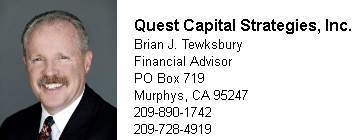Murphys, CA…What is the Medicare open enrollment period? The Medicare open enrollment period is the time during which people with Medicare can make new choices and pick plans that work best for them. Each year, Medicare plans typically change what the plans cost and cover. In addition, your health-care needs may have changed over the past year. The open enrollment period is your opportunity to switch Medicare health and prescription drug plans to better suit your needs.


When does the open enrollment period start?
The Medicare open enrollment period begins on October 15 and runs through December 7. Any changes made during open enrollment are effective as of January 1, 2018.
During the open enrollment period, you can:
Join a Medicare Prescription Drug (Part D) Plan
Switch from one Part D plan to another Part D plan
Drop your Part D coverage altogether
Switch from Original Medicare to a Medicare Advantage Plan
Switch from a Medicare Advantage Plan to Original Medicare
Change from one Medicare Advantage Plan to a different Medicare Advantage
Plan Change from a Medicare Advantage Plan that offers prescription drug coverage to a Medicare Advantage Plan that doesn’t offer prescription drug coverage
Switch from a Medicare Advantage Plan that doesn’t offer prescription drug coverage to a Medicare Advantage Plan that does offer prescription drug coverage
What should you do?
Now is a good time to review your current Medicare plan. As part of the evaluation, you may want to consider several factors. For instance, are you satisfied with the coverage and level of care you’re receiving with your current plan? Are your premium costs or out-of-pocket expenses too high? Has your health changed, or do you anticipate needing medical care or treatment?
Open enrollment period is the time to determine whether your current plan will cover your treatment and what your potential out-of-pocket costs may be. If your current plan doesn’t meet your health-care needs or fit within your budget, you can switch to a plan that may work better for you.
What’s new in 2018?
The initial deductible for Part D prescription drug plans increases by $5 to $405 in 2018. Also, most Part D plans have a temporary limit on what a particular plan will cover for prescription drugs. In 2018, this gap in coverage (also called the “donut hole”) begins after you and your drug plan have spent $3,750 on covered drugs — a $50 increase over the 2017 initial coverage limit. It ends after you have spent $5,000 out-of-pocket, after which catastrophic coverage begins. However, part of the Affordable Care Act gradually closes this gap by reducing your out-of-pocket costs for prescriptions purchased in the coverage gap. In 2018, you’ll pay 35% of the cost for brand-name drugs in the coverage gap (65% discount) and 44% (56% discount) of the cost for generic drugs in the coverage gap. Each succeeding year, out-of-pocket prescription drug costs in the coverage gap continue to decrease until 2020, when you’ll pay 25% for covered brand-name and generic drugs in the gap.
Medicare beneficiaries who file individual tax returns with income that is greater than $85,000, and beneficiaries who file joint tax returns with income that is greater than $170,000, pay an additional monthly premium or Income-Related Monthly Adjustment Amount (IRMAA) for their Medicare Part D prescription drug plan coverage. In 2018, some of these beneficiaries will see their IRMAA increase by as much as 58%, while other beneficiaries may actually see their IRMAA drop. For more information, visit the Centers for Medicare & Medicaid Services website, CMS.gov.
Where can you get more information?
Determining what coverage you have now and comparing it to other Medicare plans can be confusing and complicated. Pay attention to notices you receive from Medicare and from your plan, and take advantage of help available by calling 1-800-MEDICARE or by visiting the Medicare website, medicare.gov.


